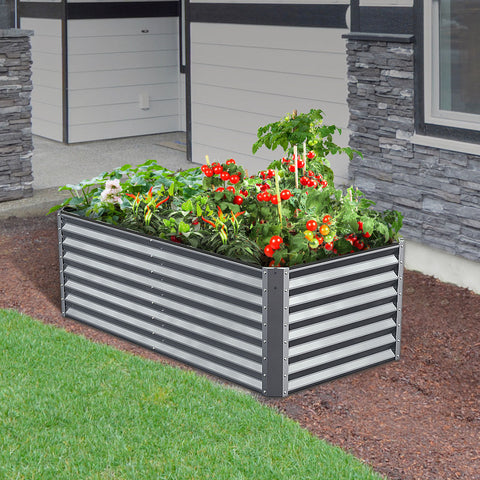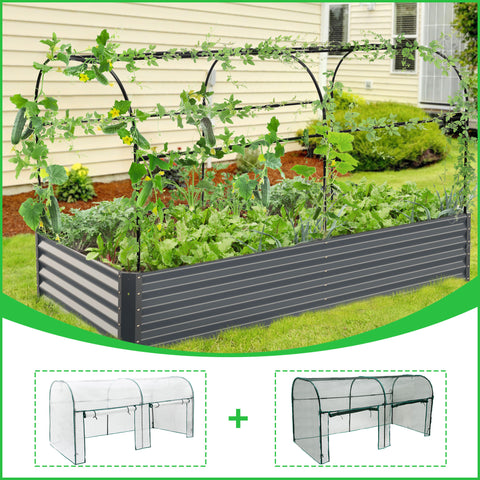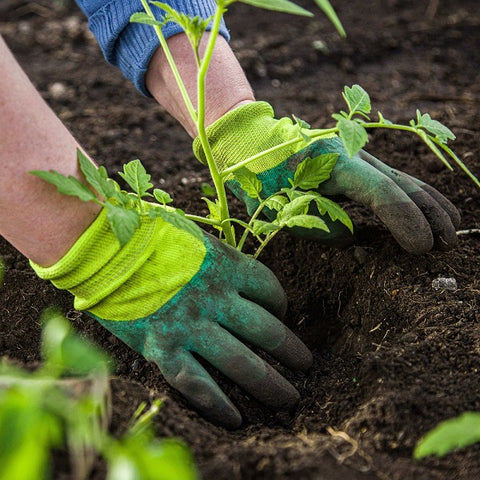Growing vegetables in the garden is an enjoyable and fulfilling activity, and one of these popular choices is chili peppers. Chili peppers not only add a unique flavor to our table, but also add color and vitality to the garden bed. If you're thinking about growing peppers in your garden bed, you've come to the right place! This article will give you details on how to grow chili peppers in your garden bed, and share some practical tips and DOS and don 'ts so that you can achieve a fruitful harvest and satisfaction. Whether you are a novice or an experienced gardener, let's explore the fun of growing chili peppers together!

Below are detailed planting steps and precautions to help you grow peppers successfully in your garden bed.
Step 1: Choose the right pepper variety First, you need to choose a pepper variety suitable for garden bed planting. There are many varieties of chili peppers to choose from, including varieties with different levels of heat and colors. You can choose the right variety according to your own taste and needs. At the same time, be careful to choose a variety that is suitable for the climate conditions of your location to ensure that the pepper will grow well in the garden bed.
Step 2: Prepare the soil Pepper plants need soil rich in organic matter and well drained. Before planting, you should soften the soil of your garden bed and mix it with decomposed compost or leaf rot soil to increase soil fertility and retain moisture. Make sure the bed is flat and free of weeds and stones.
Step 3: Planting or Transplanting seeds You can choose to plant pepper seeds directly on the garden bed, or you can purchase seedlings and transplant them to the bed. If you choose to plant seeds, you can start planting in the spring or summer. Bury the seeds lightly in the soil and cover them with a small layer of thin soil. Keep the soil moist, and usually after 10 to 14 days, the seeds will germinate.
If you choose to purchase seedlings, make sure the seedlings are healthy and have enough leaves. Before transplantation, dig suitable holes in the garden bed and determine the spacing according to the size and requirements of the seedlings. Place the seed carefully into the hole and lightly fill the surrounding space with soil.

Step 4: Give proper light and moisture Pepper plants need plenty of sunlight to grow and bear fruit. Make sure the garden bed is positioned to get at least 6 hours of direct sunlight. During the growing season, pepper plants need the right amount of water to keep the soil moist, but do not overwater to avoid root rot. Water regularly and keep the soil moist, depending on weather conditions and soil moisture.
Step 5: Provide Support and protection As pepper plants grow, they may need support to avoid lodging. You can use bamboo poles or other support materials to tie the plants together to support the stems and branches. In addition, to protect pepper plants from pests and germs, you can take appropriate control measures such as using organic pesticides or pruning infected parts if necessary.
Step 6: Harvest and use chili peppers usually begin to bear fruit within 8 to 12 weeks after sowing or transplantation. The peppers are ready to be harvested when they have turned the ripe color of the chosen variety. Use scissors or your hands to gently cut off the pepper, leaving a small section of the stem. New peppers will continue to grow, allowing you to harvest continuously.
After harvesting, you can use fresh chilies to flavor dishes, or save them for long-term use. You can dry the peppers, make a hot sauce, or freeze them.
Growing peppers in a garden bed is a fun and easy activity to do. By choosing the right varieties, preparing the soil well, providing plenty of light and moisture, while taking care to support and protect the plants, you will be able to successfully grow delicious peppers in your own garden. Enjoy the process and taste your own freshly grown peppers when the harvest comes!

Growing peppers is a simple and enjoyable gardening activity, and with garden bed planting, you can easily get fresh, delicious peppers for yourself and your family to enjoy. Whether you want to add color to your garden or pursue a self-sufficient lifestyle, growing chili peppers is an excellent choice.
When growing chili peppers, remember to choose varieties that are suitable for the climate conditions of your location and provide plenty of sunlight, proper moisture, and fertile soil. At the same time, regularly inspect and protect plants from pests and germs. With the right care and patience, you will enjoy the growth of plants and the harvest of fruits.
When you begin to harvest fresh peppers, whether for cooking, drying, seasoning or freezing, you will feel the rewards of your efforts. And sharing your own peppers with family and friends will also be one of the precious gardening experiences.
Whether you're trying it for the first time or an experienced gardener, growing chili peppers is worth a try. Let's enjoy this exciting process together and grow healthy, delicious peppers in a garden bed! I hope you find the planting guidelines and tips provided in this article helpful. Good luck growing chili peppers in your garden bed!









